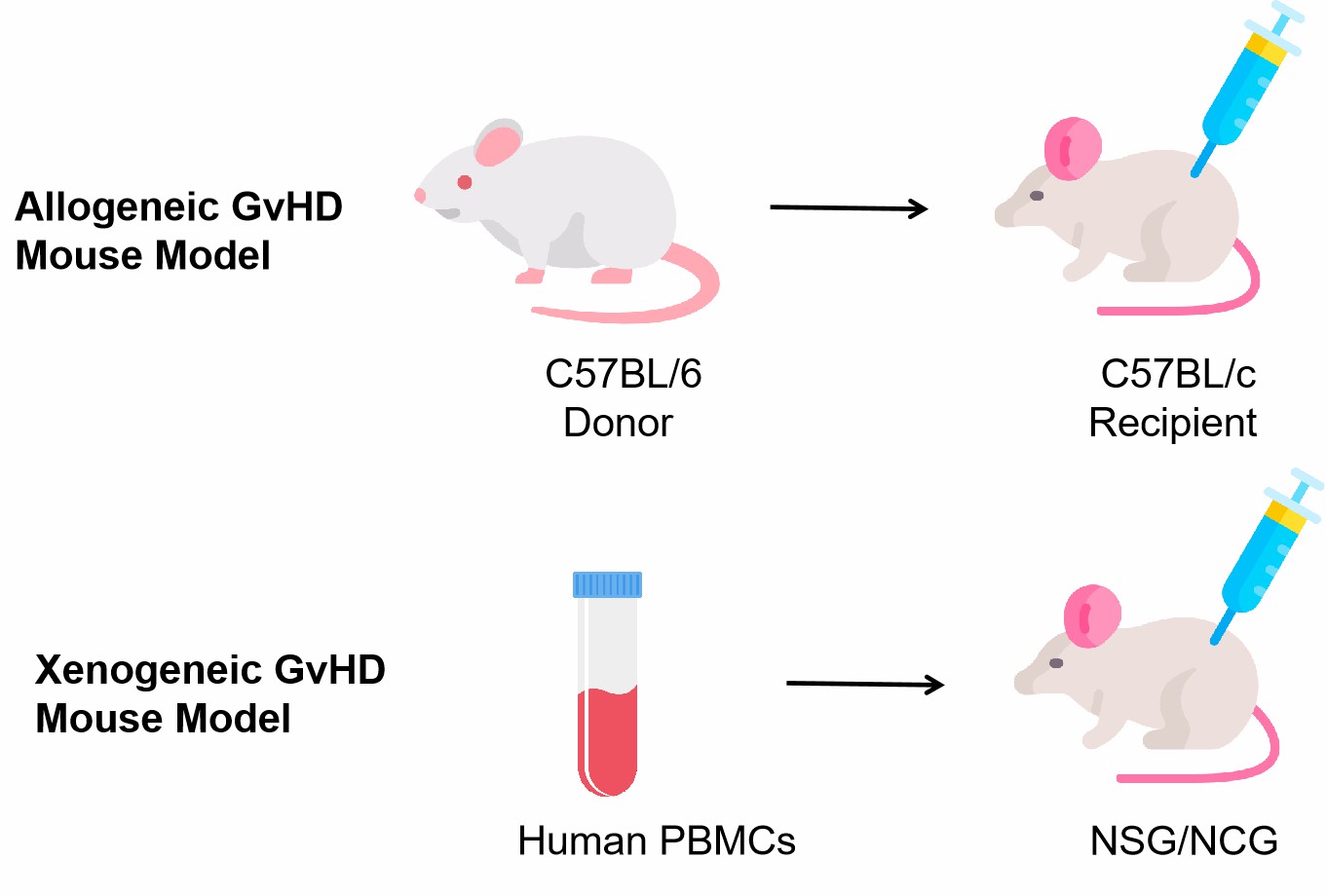Graft-versus-Host Disease (GvHD) is a major cause of death in patients after allogeneic hematopoietic stem cell transplantation (HSCT). GvHD arises when donor-derived immune cells (principally T lymphocytes) respond against host tissue antigens.
Even with thorough human leukocyte antigen (HLA) matching and the use of aggressive, immunosuppressive prophylactic regimens, about 50% of patients who undergo allo-HSCT develop acute GvHD. Many of these patients will be refractory to first line steroid therapy with a profoundly poor long-term prognosis. In addition, up to 70% of patients may develop chronic GvHD that can cause high morbidity with debilitating fibrosis, organ dysfunction, and decreased quality of life.
The complex, multi-tiered pathophysiology of GvHD, driven by dynamic crosstalk between the innate and adaptive immune system, requires further investigation in order to develop improved treatments. Reliable, reproducible experimental models are therefore essential for uncovering the molecular mechanisms driving GvHD as well as for preclinical testing of novel therapeutics.
Our GvHD Models
We offer a comprehensive portfolio of established and validated GvHD models to support your preclinical research from target identification to proof-of-concept studies.
- Allogeneic GvHD Mouse Model
Bone marrow and splenocytes are transplanted from a donor mouse strain into an irradiated, genetically disparate recipient strain. We have multiple strain combinations (e.g., C57BL/6 into BALB/c) to model different clinical disease severities and target organs (skin, GI tract, liver).
- Xenogeneic GvHD Mouse Model
Human peripheral blood mononuclear cells (PBMCs) are engrafted in immunodeficient mice (NSG or NOG strain). This is a powerful model for examining the function of human T cells in vivo, as well as for preclinical testing of human-only biologics and therapeutic antibodies.
 Fig. 1. Diagram of how GvHD mouse model are generated.
Fig. 1. Diagram of how GvHD mouse model are generated.
Key Readouts
Clinical score (weight loss, posture, fur texture, mobility)
Peripheral immune cell profiling by flow cytometry
Histopathological evaluation (liver, skin, gut)
Cytokine and chemokine profiling by ELISA
Survival and disease progression analysis
Research Support
We are your experienced partner in GvHD drug development, offering end-to-end support for your preclinical studies.
- Custom generation of murine and humanized GvHD models
- Study design consultation and project co-development
- Drug efficacy assessment and dose optimization
- Flow cytometry-based immune monitoring (e.g., T cell subsets, cytokine profiling)
- Tissue collection for histology, RNA/protein analysis, or biomarker discovery
- Comprehensive data reporting with detailed study summaries
Our models have been successfully applied in small molecule screening, biologic candidate evaluation, and cell therapy validation, providing clients with robust and translational insights into GvHD immunopathology.
- Oncology Models
- Cardiovascular Disease Models
- Dermatology Models
- Gastrointestinal Disease Models
- Infectious Disease Models
- Inflammatory Disease Models
- Metabolic Disease Models
- Neurology Models
- Ophthalmology Models
- Pain Models
- Renal Disease Models
- Respiratory Disease Models